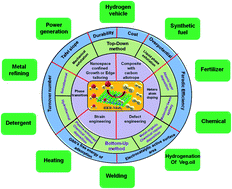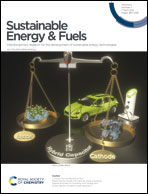HERs in an acidic medium over MoS2 nanosheets: from fundamentals to synthesis and the recent progress
Abstract
The generation of sustainable and eco-friendly energy is the lifeline of modern civilization. Electrocatalytic water splitting producing molecular hydrogen using inexpensive, non-noble metal, and eco-friendly materials is a promising and sustainable approach that can minimize the dependency on fossil fuels and the carbon footprint of society. However, there are some major obstacles such as complex/sluggish reaction pathway, high overpotential, low catalyst durability, limited faradic efficiency and pricey catalyst (Pt, Ir, and Ru) in the process of constructing commercial electrochemical HER systems, and hence, there is an immediate need for fabricating a cost-viable non-precious HER electrocatalyst. In addition to the widespread use of 2D metal chalcogenides, in particular MoS2, this layered electrocatalyst shows robust catalytic performance towards hydrogen evolution reactions under grating acidic conditions. However, its catalytic efficiency is still inferior to that of the standard catalyst (Pt). Thus, through this Mini review, we try to cover the fundamentals, underlying catalytic mechanism, activity evaluating parameters, future opportunities, and associated challenges with MoS2 electrocatalysts and adopted advanced strategies for subduing the shortcomings. Furthermore, different edge and basal plane modification strategies, various developed MoS2 preparation techniques, and characteristic advantages of MoS2 nanosheets towards HERs are also briefly discussed. Additionally, the review provides a comprehensive collection of the latest pioneering research outcomes on layered MoS2 for HER applications, particularly in acidic electrolytes. The included state-of-the-art MoS2 catalytic performance, synthesis procedure, and advanced modification methods will act as a guiding tool to tune other materials accordingly to achieve the benchmark activity and turn the dream of H2-fuel commercialization in an environmentally sustainable manner, i.e. by non-noble metal-based HER electrocatalysis.

- This article is part of the themed collection: Sustainable Energy and Fuels Recent Review Articles


 Please wait while we load your content...
Please wait while we load your content...